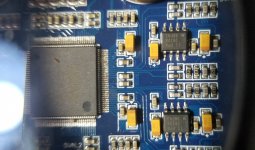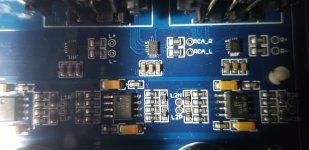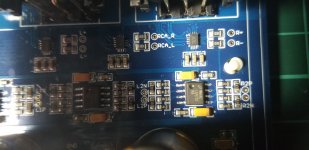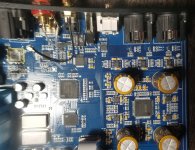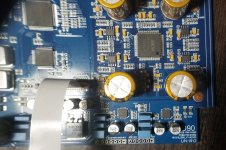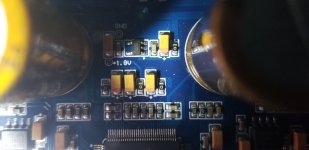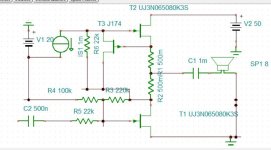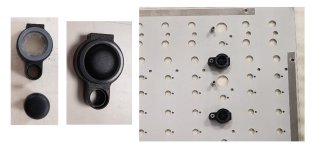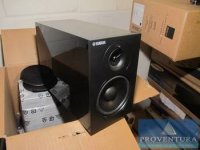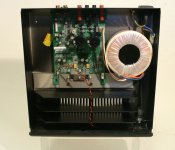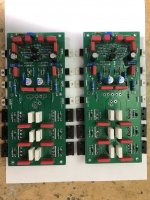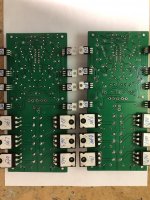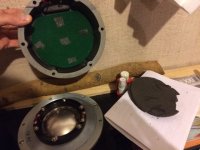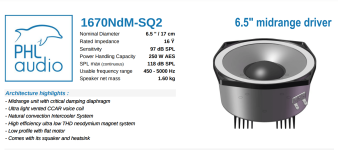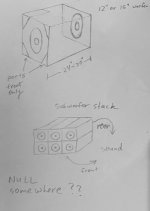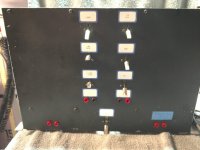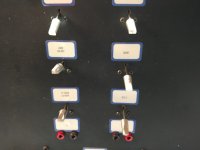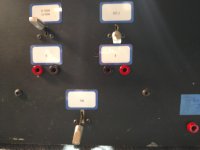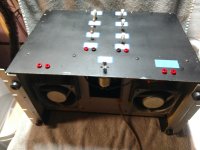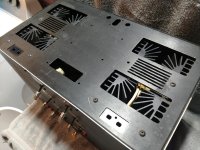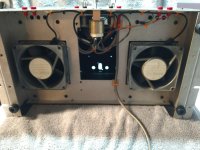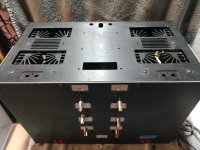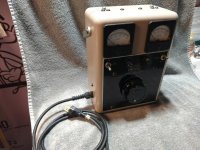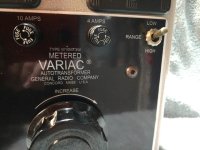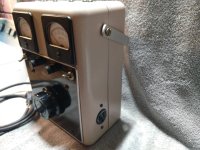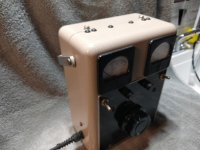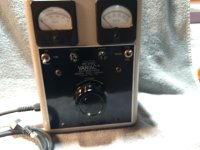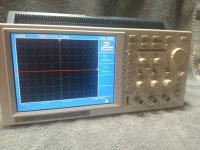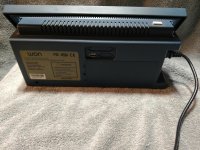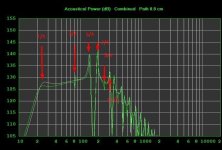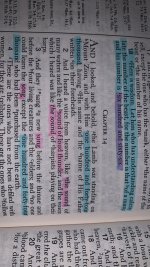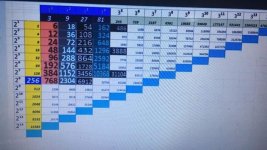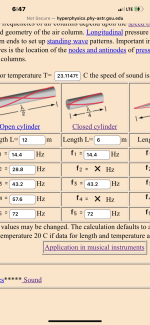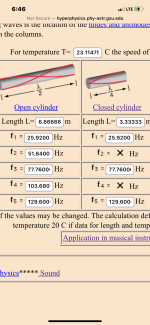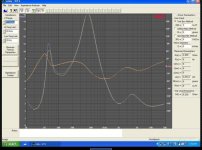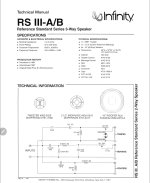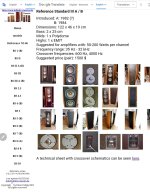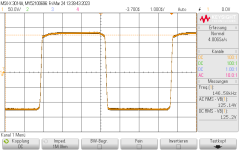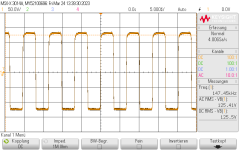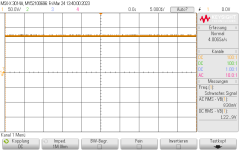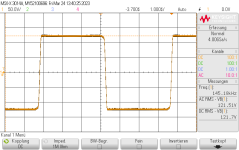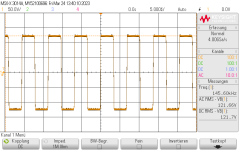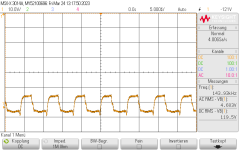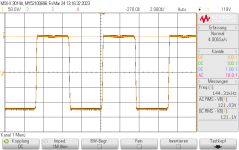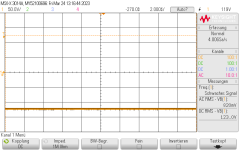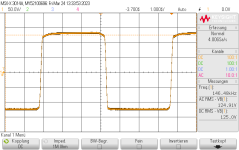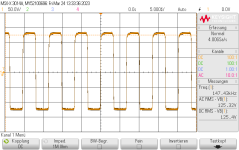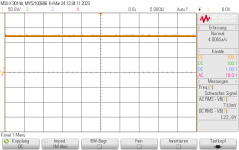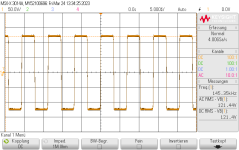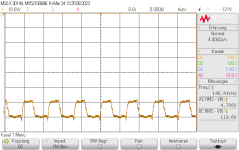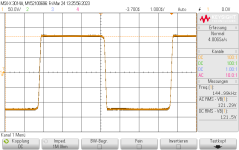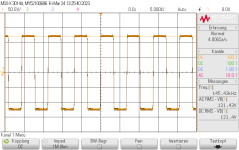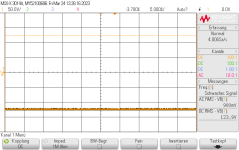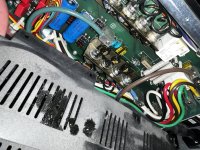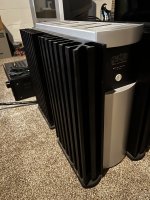Cairn 4808 amplifier repair help
- By glennjarrett
- Solid State
- 40 Replies
Bought this as not working and has been modified . Someone has had a go at fixing this but thats the only info i have . The mods consist of bigger supply caps changed from 4x 4,700uf to 22,000uf 😱 the rectifier package on the pcb has been removed and replaced by a another one attached to the heatsink
the fuses x4 where moved to the back of the pcb and most of the capacitors have been swapped out for panasonic fc then bypassed with film caps under the pcb .
the case alone is worth what i payed for it not to mention the Eichmann Cablepods on the back 🙂. On powering it up after a few seconds the relay for the speaker output clicked in so i connected my stunt speakers and although the source selector and volume control worked on the lcd display nothing from the speakers .
Checked the 2x big transformers all ok 2x 20v. the front display lcd and input selector relays are fed from a small transformer on the front panel pcb .
So the big transformers just power the output . Decided to remove the pcb to investigate further see pics . Removed the 4x supply caps and removed the output mosfets on the heatsink which all tested ok . removed the fuse holders and put them back on top of the pcb .
After studying the board i noticed a voltage regulator was missing i traced the tracks to a PGA2311 volume control chip on the back of the pcb after looking at the data sheet of the ic i found out it needs a +/- 5volt supply so i have replaced with new + and - 5v regs .
I have probed most of the components with my component tester on my Hameg hm605 oscilloscope and none where short all looks good .
I am hoping its just the supply to the PGA2311 and thats it 😉. What i would like to know is am i better to replace the main power supply caps with 4,700uf original caps as the 22,000uf wont fit now i have moved the fuse holders back didnt want to leave them under the pcb as it needs to be removed to replace fuses.
Looking at the build quality of the amp i dont think they used 4,700uf to save money ! Whats your thoughts on that ?
here are the pics....
the fuses x4 where moved to the back of the pcb and most of the capacitors have been swapped out for panasonic fc then bypassed with film caps under the pcb .
the case alone is worth what i payed for it not to mention the Eichmann Cablepods on the back 🙂. On powering it up after a few seconds the relay for the speaker output clicked in so i connected my stunt speakers and although the source selector and volume control worked on the lcd display nothing from the speakers .
Checked the 2x big transformers all ok 2x 20v. the front display lcd and input selector relays are fed from a small transformer on the front panel pcb .
So the big transformers just power the output . Decided to remove the pcb to investigate further see pics . Removed the 4x supply caps and removed the output mosfets on the heatsink which all tested ok . removed the fuse holders and put them back on top of the pcb .
After studying the board i noticed a voltage regulator was missing i traced the tracks to a PGA2311 volume control chip on the back of the pcb after looking at the data sheet of the ic i found out it needs a +/- 5volt supply so i have replaced with new + and - 5v regs .
I have probed most of the components with my component tester on my Hameg hm605 oscilloscope and none where short all looks good .
I am hoping its just the supply to the PGA2311 and thats it 😉. What i would like to know is am i better to replace the main power supply caps with 4,700uf original caps as the 22,000uf wont fit now i have moved the fuse holders back didnt want to leave them under the pcb as it needs to be removed to replace fuses.
Looking at the build quality of the amp i dont think they used 4,700uf to save money ! Whats your thoughts on that ?
here are the pics....
An externally hosted image should be here but it was not working when we last tested it.
An externally hosted image should be here but it was not working when we last tested it.
An externally hosted image should be here but it was not working when we last tested it.
An externally hosted image should be here but it was not working when we last tested it.
An externally hosted image should be here but it was not working when we last tested it.
An externally hosted image should be here but it was not working when we last tested it.
